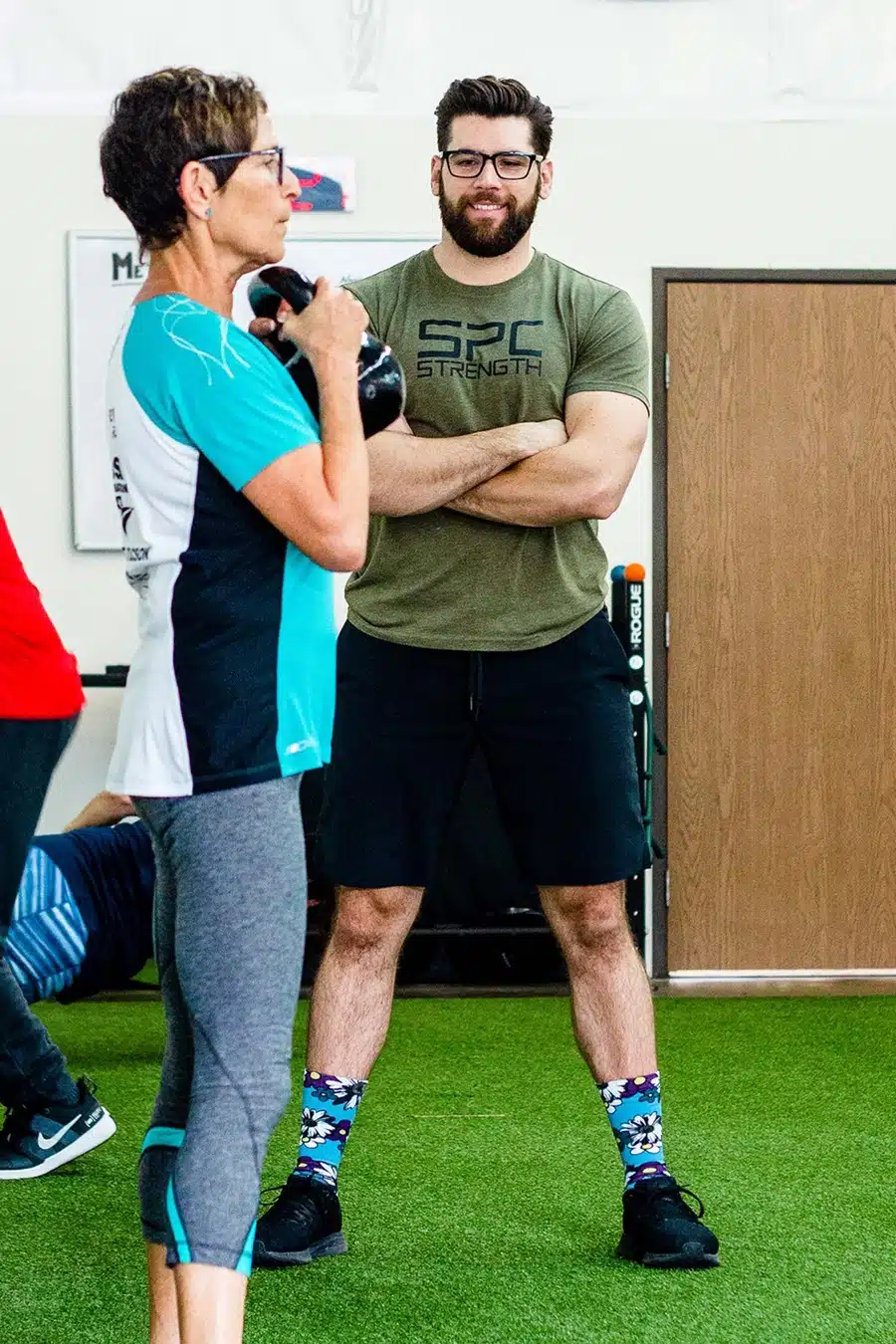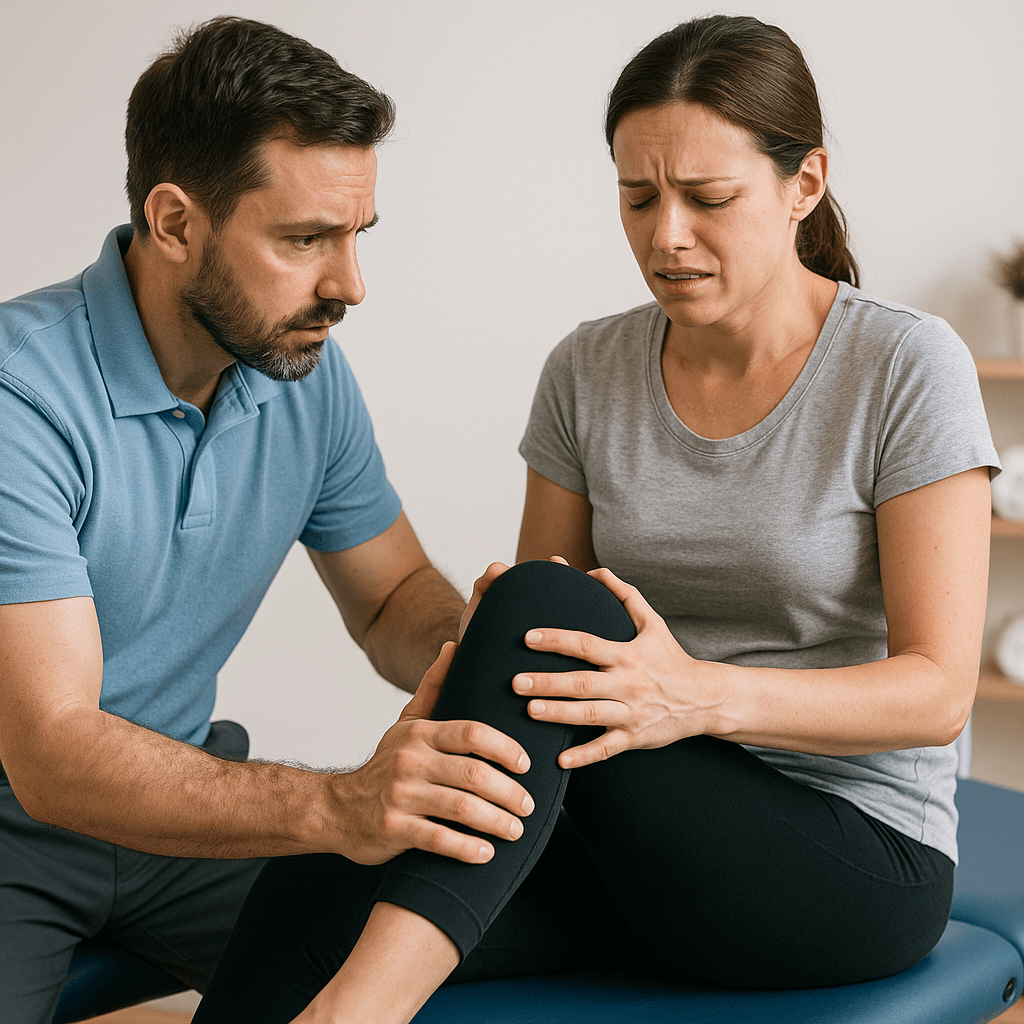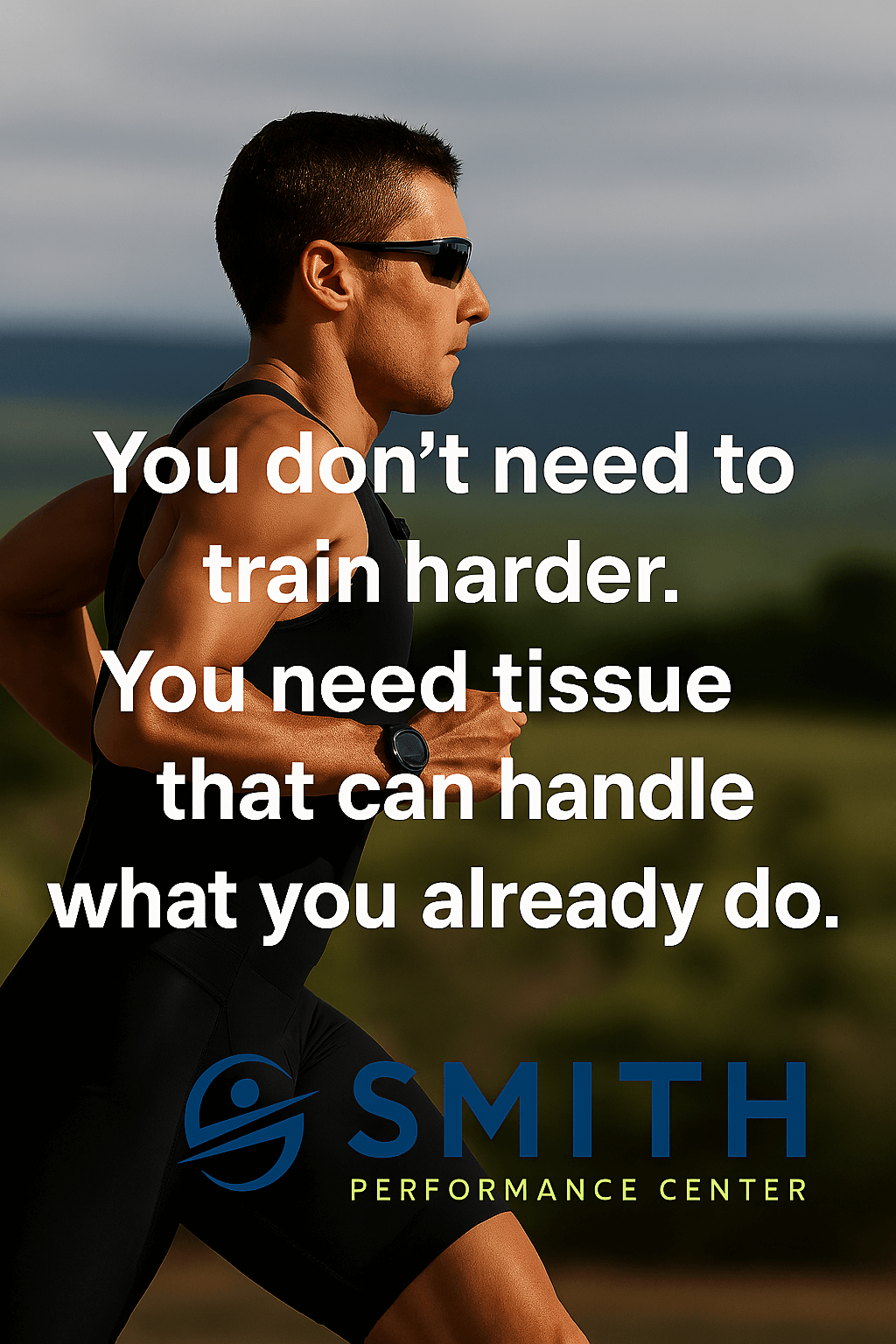You feel good walking into the gym. No pain, no issues. But later in the day, your low back soreness flares up again, or the knee pain that had been getting better comes back with a vengeance. This regression happens even when your workout felt easy and pain-free at the time.
Why?
It’s a frustrating phase of rehab—Phase 3: Activity Progression—one that often leads people to self-defeating thoughts: I’m getting too old. Maybe I need to do something with less impact. The problem isn’t aging or your body’s inability to heal—it’s a fundamental mistake: training at exercise capacity rather than tissue capacity.
When this mistake happens over and over again, it becomes an injury doom loop—a cycle of pain, recovery, re-injury, and frustration. Many people get stuck in this cycle because they don’t have the right tools or support system to progress. This is where teamwork becomes critical. As individuals build tissue capacity, the physical therapist supports their transition toward greater independence, helping shift them away from an injured mindset. At the same time, the coach steps in to provide structured guidance, ensuring that progress continues safely and effectively.
This is where a strength coach like Sean McConnell makes all the difference.

‘Confidence is even more important than strength. People come in with doubt and fear of pain. If they don’t believe they can move safely, they won’t move at all.‘
The Right Support System: What Sean Has Learned
At Smith Performance Center in Tucson, Sean has worked with countless clients who struggle to get back into exercise after injury. The SPC team works collaboratively, ensuring that physical therapists guide individuals through their rehab phases while strength coaches like Sean step in to provide structured training, helping clients regain confidence and autonomy. His approach is built around consistency, confidence, and a measured approach—focusing not just on the body, but also on the psychological barriers holding people back.

Here are some of the key insights Sean has developed through years of working with individuals stuck in the injury doom loop:
1. The Best Exercise is the One You Can Do
Sean says, “The best exercise is the one that you can do. So, starting small with a measured approach, with emphasis on tissue capacity tolerance, and then monitor the response and slowly build.”
This means avoiding the common mistake of assuming you can do more than your body is ready for. It also means recognizing that improvement doesn’t happen overnight. It’s a process.
2. Confidence is More Important Than Strength
Sean explains, “I think confidence is even more important. Because they’re already coming in with doubt or fear of pain. So it’s an art in the sense that it’s assessing the movement quality and the ability as much as assessing the psychological acceptance around it.”
Fear of movement keeps people trapped in the injury doom loop. Helping them find success in small steps—without overwhelming them—builds the confidence they need to keep progressing.
3. Find the Right Starting Point
“To find somebody’s starting point, I start by hitting the four basic movements. That’ll be a sit to stand, a banded row, a hip hinge, and an upper push. Those four give me a full-body picture, but in the safest way possible,” Sean shares.
If these movements don’t feel good, modifications are made. The key is meeting people where they are, not where they think they should be.
4. Pain and Setbacks Aren’t Always From the Workout
Sean says, “I try to help them identify things that may be happening outside the workout. Were you moving stuff you weren’t expecting to? Were you on your feet longer than normal? Because I definitely do not want folks to just think about the workout as the cause. If you’re already dealing with fear, I want to differentiate where that came from.”
This highlights the importance of understanding feedback loops—monitoring symptoms before and after workouts to see what’s truly causing setbacks.
5. Progression Shouldn’t Feel Like Pressure
“One of the hardest things to do as a coach is to be supportive without applying pressure. People need to feel safe, not pushed into something they aren’t ready for. If they hesitate to progress, I don’t force it. I let them build confidence on their own timeline,” Sean explains.
Many coaches make the mistake of thinking progression means pushing harder. But true progression happens when a person feels ready to take the next step—and that readiness is different for everyone.
6. The Goal is Long-Term Consistency, Not Short-Term Gains
Sean emphasizes, “It’s easy to be motivated when you see immediate results. But real success comes from long-term consistency. If someone stays in the game for a year or more, their health and strength will be in a completely different place. But if they quit after six months, none of it matters.”
This is why education is crucial. Clients need to understand that the benefits of exercise compound over time—but only if they stay consistent.
7. Rewriting the Narrative
Sean doesn’t allow negative self-talk to derail progress. “People say stuff like, ‘Oh, it’s only 7.5 pounds’ or ‘I’m not as strong as I used to be.’ I don’t let that slide. I just stop it. I counter it immediately. I tell them, ‘No, you’re doing great.’ Because they’re beating themselves up. I won’t let them do that.”
Many people get stuck in a negative script about their body, reinforcing fear and doubt. Helping them shift their perspective is just as important as improving their movement.
Breaking Free from the Doom Loop
If you’ve been stuck in the injury doom loop, unable to consistently exercise without setbacks, you don’t need a miracle solution—you need a better approach. At Smith Performance Center, we specialize in helping people transition from physical therapy to long-term strength training, ensuring that each phase of rehab builds lasting movement confidence. The key is understanding tissue capacity, tracking feedback loops, and having a support system that builds confidence instead of pressure.
Sean and the team at Smith Performance Center have helped countless people break free from this cycle by guiding them through small, progressive steps that prioritize long-term success over quick fixes.
If you’re looking for expert guidance and a structured approach to rebuilding strength and movement, schedule a consultation with our team today! If you’re ready to stop the cycle of frustration and start building a foundation for lasting strength and movement, the right support system can make all the difference.







